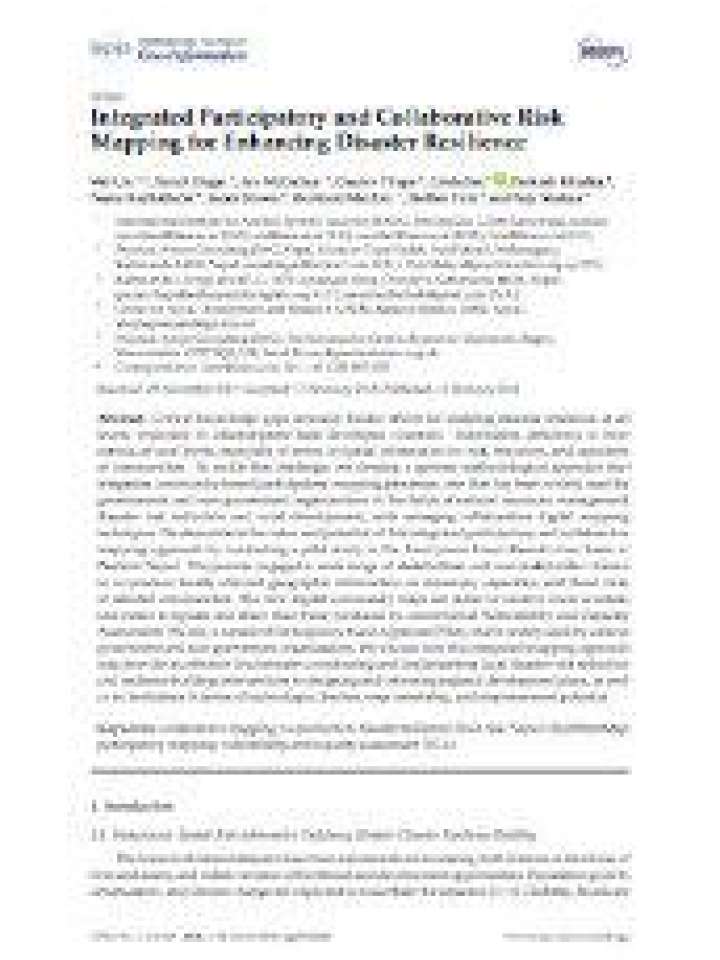Integrated participatory and collaborative risk mapping for enhancing disaster resilience
This paper develops a general methodological approach that integrates community-based participatory mapping processes, one that has been widely used by governments and non-government organizations in the fields of natural resources management, disaster risk reduction and rural development, with emerging collaborative digital mapping techniques. This approach aims to fill critical knowledge and information gaps at local levels, especially in terms of spatial information on risk, resources, and capacities of communities.
This paper demonstrates the value and potential of this integrated participatory and collaborative mapping approach by conducting a pilot study in the flood-prone lower Karnali river basin in Western Nepal. The process engaged a wide range of stakeholders and non-stakeholder citizens to co-produce locally relevant geographic information on resources, capacities, and flood risks of selected communities. The new digital community maps are richer in content, more accurate, and easier to update and share than those produced by conventional Vulnerability and Capacity Assessments (VCAs), a variant of Participatory Rural Appraisal (PRA), that is widely used by various government and non-government organizations.
This paper discusses how this integrated mapping approach may provide an effective link between coordinating and implementing local disaster risk reduction and resilience building interventions to designing and informing regional development plans, as well as its limitations in terms of technological barrier, map ownership, and empowerment potential.
Explore further
